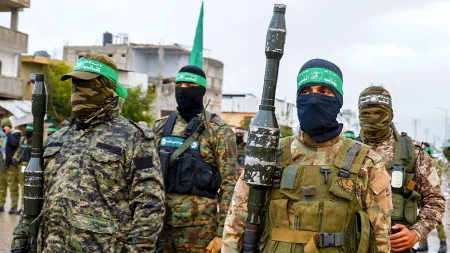The pre-dawn hours of a Saturday in Brazil witnessed a horrific tragedy as a packed passenger bus collided with a truck on a major highway, resulting in a devastating fire and the loss of over 30 lives. The accident occurred near the town of Teofilo Otoni in the state of Minas Gerais, leaving a scene of devastation and grief. Emergency responders worked tirelessly to extricate victims from the wreckage, but the intensity of the blaze and the impact of the collision led to a significant loss of life.
Initial reports from the Minas Gerais Fire Department indicated that out of the 45 individuals on board the bus, 38 tragically perished, including the bus driver. The remaining passengers sustained critical injuries and were immediately transported to a local hospital for urgent medical attention. The truck driver involved in the incident fled the scene, while three occupants of a car that became entangled in the collision were fortunately rescued and survived the ordeal.
The gravity of the accident prompted a swift response from Brazilian President Luiz Inacio Lula da Silva, who expressed his profound sorrow and offered condolences to the families of the victims. Via social media, President Lula assured the affected families and the public that the government stood ready to provide all necessary support and resources. He also confirmed that the Federal Highway Policy was actively involved at the accident site, underscoring the government’s commitment to addressing the tragedy’s aftermath.
The precise cause of the accident remained unclear in the immediate aftermath, with conflicting accounts emerging from witness testimonies. This necessitated a thorough forensic investigation to determine the definitive sequence of events that led to the catastrophic collision. Preliminary reports from firefighters suggested a tire blowout on the bus as a possible contributing factor, leading the driver to lose control and collide with the oncoming truck. This initial account placed the time of the accident at approximately 4:00 am local time, on the BR-116 federal highway, a crucial transportation artery connecting Brazil’s densely populated southeast region to the economically disadvantaged northeast.
However, alternative accounts from witnesses presented a different scenario. These witnesses reported that a granite block being transported by the truck dislodged and fell onto the highway, creating an obstacle that precipitated the collision with the bus. This conflicting information highlighted the complexity of the accident and the need for a comprehensive forensic analysis to reconcile the differing narratives and establish the definitive cause. The Fire Department acknowledged the discrepancies and emphasized that only a meticulous forensic investigation could unveil the true sequence of events.
The ill-fated bus had embarked on its journey from Sao Paulo and was en route to the state of Bahia. The accident tragically cut short the travels of the passengers, transforming what should have been an ordinary journey into a devastating loss. The incident underscores the inherent risks of highway travel and the importance of stringent safety measures to prevent such catastrophic outcomes. The subsequent investigation promised to shed light on the specific factors that contributed to this tragedy and potentially inform future preventative measures to enhance road safety and prevent similar incidents. The nation mourned the loss of life, while authorities focused on providing support to the grieving families and uncovering the truth behind this heartbreaking event.















